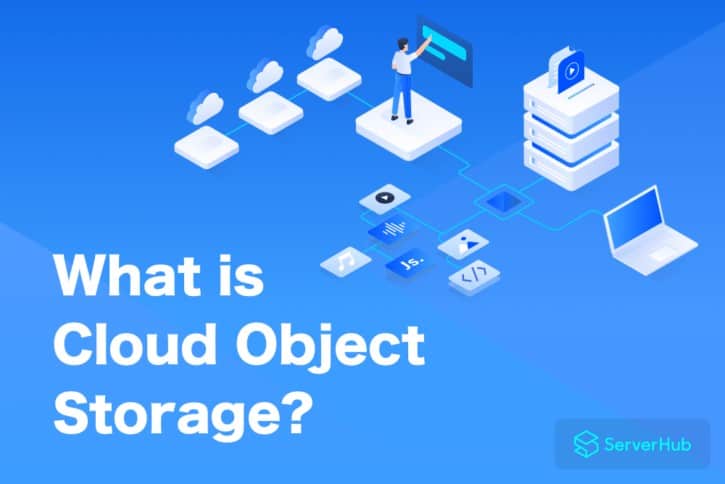Data is infinite.. sometimes its capacity reaches numbers beyond Terabytes and even Petabytes. In cases such as this when the data is ever-increasing in huge numbers, regular methods of storage start to become very costly and, in prospect, eventually obsolete. This is where Cloud Object Storage comes in.
Also commonly known as Object-based Storage, Cloud Object Storage is unique method of data management used mostly for Big Data.
Though Block Storage (SAN) and File Storage (NAS) are also viable options for Data Storage, there comes a limit to how much data they can take as their data sorting systems differ from each other.
How Does Cloud Object Storage Work?
Cloud Object Storage is a system or a form of storage architecture that manages and manipulates high amounts of unstructured data into data units called Objects.
After breaking down the data into objects, each combined group of data is equipped with comprehensive Metadata and attached to Unique Identifier.
Instead of keeping those objects (data units) in files and folders or specific server blocks, Cloud Object Storage keeps those object in repositories of its own. Each repository is filled with a specific type of objects based on the metadata of said object/repository.
All repositories are kept in a single flat-address space called a Storage Pool. To retrieve any kind of data from the space pool, Cloud Object Storage uses the metadata as well as the unique identifier to provide the user with the data they requested.
In simpler terms, Cloud Object Storage volumes function as modular units. Each volume serves as multiple things:-
A) Repository: this repository owns the data.
B) Unique Identifier: this allows the object to be found over a broken-down distributed system.
C) Metadata: this is a detailed description of the the data. It is very important and needs to be vastly detailed as those details about the data will help us find it. This can reach the level of song name, writer, studio, singer, software used, instruments used, and even more.
The Cloud Object Storage System makes use of the Metadata and the Unique Identifiers to distribute the data in an organized manner and to help the user retrieve that data through robust searches.
How To Use & Access Cloud Object Storage
To access and make use of a Cloud Object Storage System, you will need to have access to a simple HTTP Application Programming Interface (API).
A Cloud Object Storage System can carry any number of static files of data. That data can be called by an API. You can also make many more actions than just calling Objects. You can retrieve, update, and delete those objects as well as manage your cloud object storage volume, its containers, accounts, users, databases, etc..
To get back to our “Audio data” example, if you have an gigantic cloud database full of records. you will store all the audio files you have inside it. Those Audio Files are called Data. You will also store, along with each audio file, information that breaks it down such as Artist, Producer, Studio, Genre, Length, etc.. This information is called Metadata.
If you have a huge ever-increasing amount of audio files, retrieving and accessing data will take a long time and the robust search will end up being very unsmooth.
This is where a Cloud Object Storage System comes in. Since all the files of data is static, nothing about the Data Units (Objects) will change since they are stored in the Storage Pool. That includes Data, Metadata, and the Unique Identifiers.
With a single API call, you can easily and smoothly access and retrieve any kind of data you need.
Read more about different types of Storage on ServerHub’s Knowledgebase.

Generally I don’t read post on blogs, but I would like to say that this write-up very pressured me to take a look at and do so! Your writing style has been surprised me. Thanks, very great article.